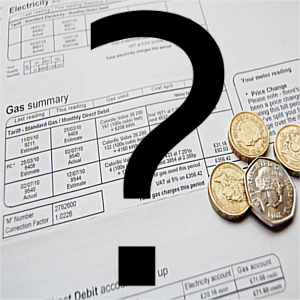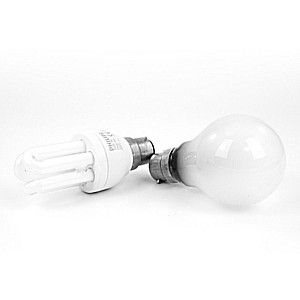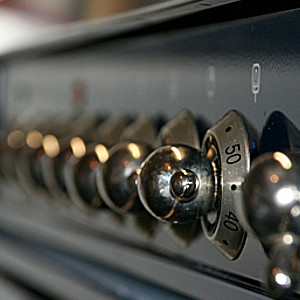Official warning: watch out for lousy Christmas loans!
The Financial Conduct Authority believe that at least 15 firms are offering...
Looking to save money on your bills but don’t know where to start? Me too. I’ve been gathering electricity saving tips to help reduce our energy bills.
Turns out, this is basically a list of reasons why I shouldn’t be allowed to live on my own. It’s also a list of my crimes against energy-saving. I’m sorry world, I can change.
If you find you’re doing most of these things already, that’s excellent, go you! If not, don’t worry. We’re in this together.
Let’s embrace the list and we’ll save money on our electricity bills while helping the environment too. Hooray!
Before we move on to the little things you can do around the house to save on your electricity bill, let’s do some initial groundwork:
1. Switch and save: First things first: make sure you’re getting the cheapest energy tariff you can. Use an energy switching website to help you find a good deal rather than hunting around yourself. It’s much nicer having other people do the hard work isn’t it?

2. Understand your bill: If you’re feeling confused by the whole electricity/gas thing in general, you’re not alone.
Take a look at this quick video about understanding energy bills to help get your head around things.
3. Check your bills: Cheap tariff sorted and understood, now it’s time to start checking your bills. Submit regular meter readings and don’t rely on energy company estimates. You wouldn’t settle for a ‘wage estimate’, so don’t settle for this.
Say bye to standby: You know when you leave an appliance on standby? It costs money to keep that little red light on. Just turn it off at the plug and save yourself some cash. What’s the point of standby anyway?
While we’re on the topic, it’s probably a good time to mention that your microwave and oven are secret culprits of this too – the swines! Those little clocks on the front use electricity, but how often do you actually use the microwave or oven? Maybe once a day? Turn them off. Be brutal, unplug them at the source.
Don’t overcharge: Until recently (today) I’d put my phone on charge and leave it all night. Even though I know, I KNOW, it only takes around two hours to charge. So much wasted electricity and money. Don’t be a fool like me: charge your phone and unplug it when it’s done, simple.
 Light bulb moment: Are you guilty of opting for non-energy saving light bulbs because they’re cheaper? Me too. What are we like, eh?
Light bulb moment: Are you guilty of opting for non-energy saving light bulbs because they’re cheaper? Me too. What are we like, eh?
The reality is that they’ll save us money in the long run whereas the cheap ones won’t. We all know this, so let’s bite the bullet, splash out and buy energy saving bulbs. We can feel smug about it too, so that’s another plus.
Lights out: Simple enough right? Just turn the lights off. Why leave the lights on when you’re not in a room anyway? Even I know not to do that.
Eco a go-go: Take advantage of the eco-settings on your appliances. They’re designed to cut water and electricity use, saving you money on both. It’s important to note that the eco-setting on a washing machine may not always be the cheapest option if you have a ‘quick wash’ available, so it’s worth checking this.
Be cool: Your washing machine may or may not have an eco-wash setting, however it’s almost definitely got a temperature dial. Washing your clothes on 30 or even 20 degrees can save you lots of energy, although it might not be so great at getting tougher stains out.
Air-dry: I don’t know about you guys but I’m very guilty of using a tumble dryer to dry my clothes. I don’t need to, it’s just quicker. Unfortunately tumble dryers use up a lot of electricity.
Rumour has it you don’t need a tumble dryer to dry your clothes though. Nope. There’s a much cheaper, more energy efficient method that involves putting your clothes on a clothes horse or washing line and then you just *wait* for them to dry. This is free too. Who knew?
Unfortunately this isn’t always an option (it can sometimes make a room damper for example), so if you must tumble dry here are some tips to help reduce costs.
Seal the deal: There’s a situation in my flat at the moment: the freezer door is frozen shut. The seal on the door had a huge gap so it all frosted over. I knew this and did nothing (sorry landlord). Who knows how much energy and money this is wasting? Always check the seal to save energy escaping. I’ve got pizza trapped in that freezer. Delicious pizza.
Defrost: While we’re on the topic of frozen freezers, make sure you defrost your fridge and freezer regularly to make sure they’re running as efficiently as possible. There are some unusual defrosting tips here although we can’t guarantee how safe they are…
Boiling point: Only boil the amount you need to use in the kettle. Filling the whole kettle for just one cup of tea means more energy is used to heat it up. Don’t forget to descale it too because not only is limescale gross, but it reduces the efficiency of your beloved kettle too.
 Oven trouble: The humble oven allows us to cook food. It’s also a big energy drain. So how about this: cook food in batches and freeze what you don’t use immediately. You can then use the microwave to heat it up when needed as it’s more energy efficient than our oven-ly friends.
Oven trouble: The humble oven allows us to cook food. It’s also a big energy drain. So how about this: cook food in batches and freeze what you don’t use immediately. You can then use the microwave to heat it up when needed as it’s more energy efficient than our oven-ly friends.
I’ve also heard that you can turn the oven off 10 minutes before the food is finished cooking as it’ll make no difference to the temperature. Probably best to try this one on something like pizza first.
On the hob: If you’re boiling some vegetables or what not on the hob, make sure you’ve got a lid to pop over the top of your pan to keep the heat in. Again, this is a great way to only use the amount of water you need, rather than filling the whole pan for a single piece of broccoli. Not that anyone eats a single piece of broccoli – do they?
If, like myself, you don’t own any pan lids you can use kitchen foil as an alternative. Double up if necessary to make it stronger and please, please be careful not to set the foil on fire. We are not responsible for any foil mishaps.
You can also boil the water in a kettle first then pour it into a pan ready for the veg. This tends to be quicker and more energy efficient too.
Know your oven: Learn how long your oven takes to heat up. Then you can prepare food for as soon as it’s ready, rather than the oven heating away while you’re frantically chopping up vegetables.
Let your food cool: Avoid putting hot food straight into the freezer or fridge as it’ll need to work harder to cool it down. Working harder means more energy usage, and no one wants that. Leave it to cool for a while first but try to refrigerate it within 90 minutes. If you’re concerned about storing food correctly here’s a guide to cooling and reheating leftovers.
Fill up: If your fridge is as empty as mine (featuring a block of cheese and some butter currently) or just has a lot of spare space, make sure you fill it up. You can fill up some water or milk bottles with water if you’re in between food shops as this will work just as well. The reason for this? It’ll help keep things cold so your fridge doesn’t have to work as hard. Don’t overload it either though!
Maintain a temperature: Keep your fridge and freezer at a consistently cool temperature. This’ll ensure your food stays cool and your energy bills are low too. Around 3-5 degrees for a fridge and -18 degrees for a freezer should do the trick. You can use a thermometer to test this, as the dial isn’t usually an indicator of temperature – who knew? Not I.
There are even more handy energy saving tips for your fridge here.
So there we have it. A few simple things we can do to help reduce our electricity bills.
Do you have any electricity saving tips to add to the mix? Let us know in the comments below.
Responses